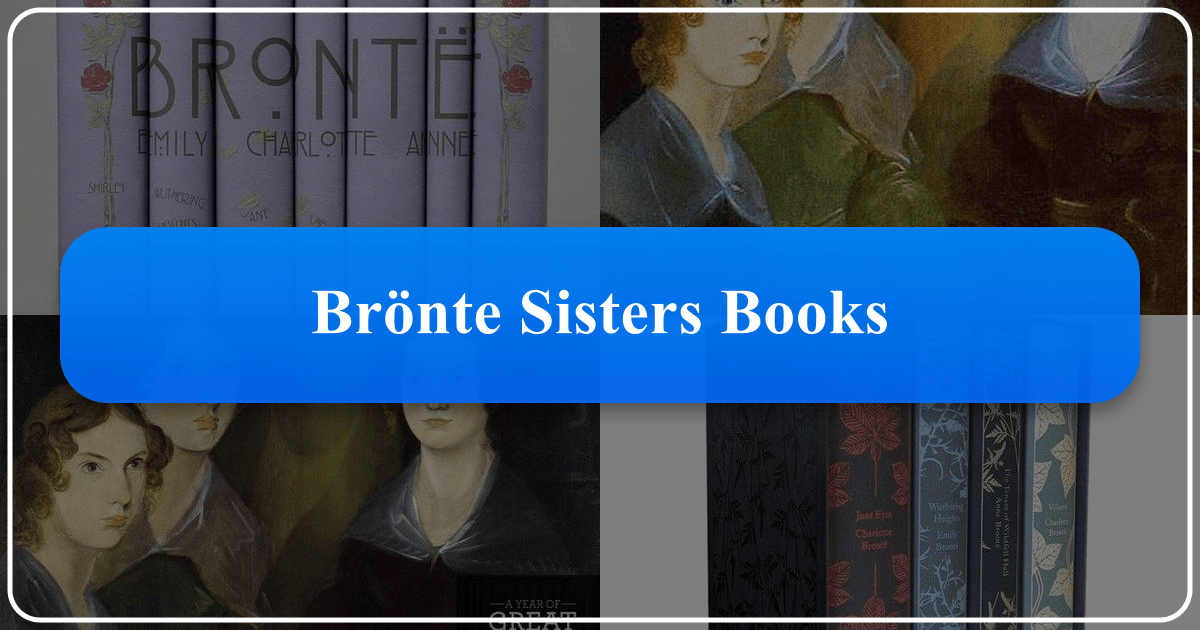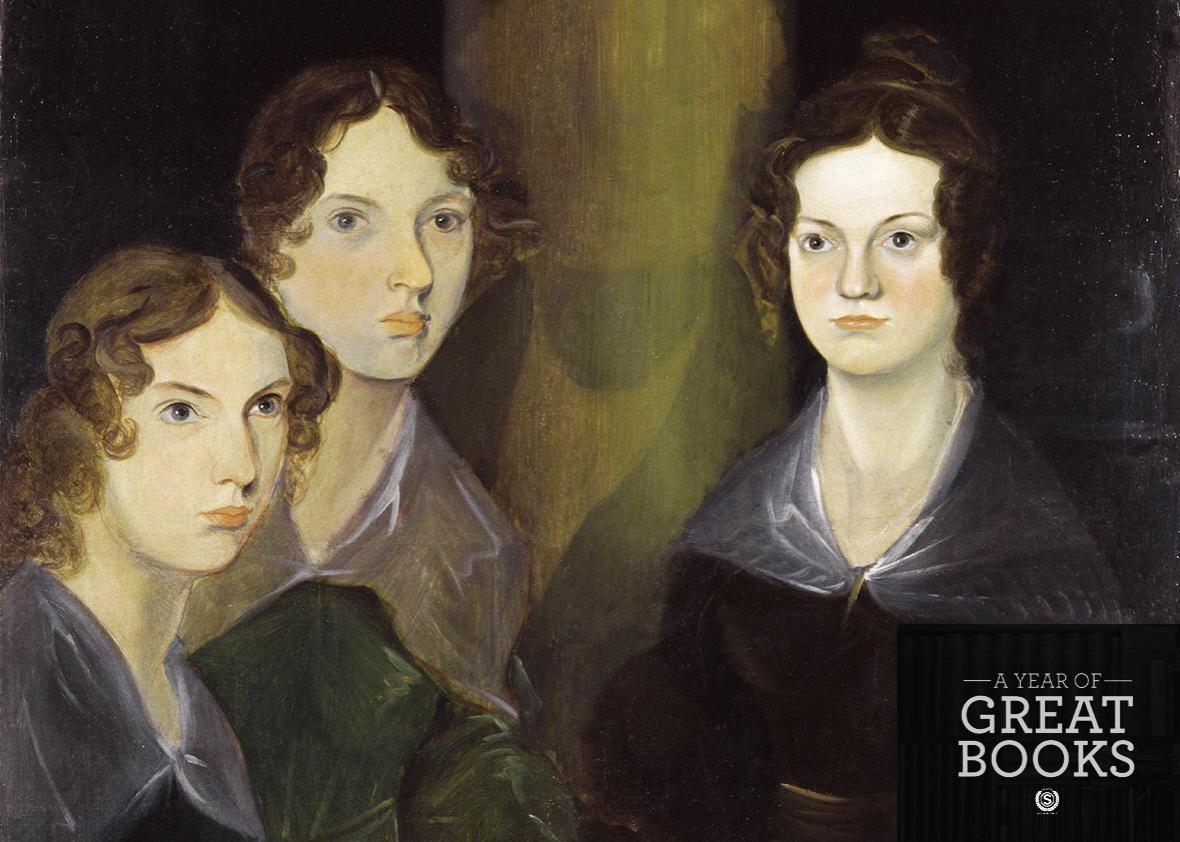Brontë Sisters Books: A Comprehensive Exploration

The Brontë sisters—Charlotte, Emily, and Anne—remain literary giants, their novels captivating readers for generations. Their works transcend time, exploring themes of love, loss, social class, gender roles, and the power of the human spirit against challenging circumstances. This article delves into the world of Brontë sisters’ books, examining their genres, literary influence, and lasting cultural impact. We will explore their individual writing styles and inspirations, analyze the educational value and life lessons embedded in their narratives, and investigate the remarkable impact their works have had on libraries and the literary landscape.
1. Books: A Genre-Defying Legacy

The Brontës’ literary contributions are diverse and remarkably impactful, spanning several genres within the broader category of 19th-century literature. Their novels showcase a depth of emotional exploration and masterful storytelling that continues to resonate today.
1.1 Genres: Gothic, Romance, and Social Commentary
Emily Brontë’s Wuthering Heights is a prime example of the Gothic novel, characterized by its bleak setting on the Yorkshire moors, supernatural elements, and exploration of intense, often destructive, passions. The novel’s exploration of revenge, class conflict, and the enduring power of love and hatred across generations cemented its place in literary history.

Charlotte Brontë’s Jane Eyre blends elements of Gothic fiction with a bildungsroman (coming-of-age story) and a passionate romance. Jane’s journey from impoverished orphan to independent woman, her complex relationship with Mr. Rochester, and the novel’s exploration of social inequalities and female empowerment marked a significant departure from conventional Victorian novels.
Anne Brontë’s Agnes Grey and The Tenant of Wildfell Hall offer a more realistic portrayal of Victorian life, particularly focusing on the experiences of women in constrained social roles. Agnes Grey delves into the hardships faced by governesses, while The Tenant of Wildfell Hall is considered an early feminist novel due to its unflinching portrayal of domestic abuse and a female protagonist who chooses independence. Charlotte Brontë’s Shirley similarly engages with social issues, weaving together a compelling narrative set against the backdrop of the Luddite movement. Villette, also by Charlotte, explores themes of loneliness, ambition, and self-discovery in the context of a foreign setting. The Professor, often overlooked, showcases Charlotte’s early experimentation with realistic and psychological themes.

1.2 Classics and Bestsellers: Enduring Popularity
The enduring popularity of the Brontës’ works is undeniable. Their novels are considered classics of English literature, consistently appearing on reading lists, studied in academic settings, and adapted into various media. Jane Eyre and Wuthering Heights, in particular, have achieved iconic status, translated into numerous languages and inspiring countless adaptations. Their continued presence on bestseller lists, both in physical and digital formats, attests to their timeless appeal.
1.3 New Releases and Book Reviews: A Continuing Legacy
While the Brontës’ original works are the foundation of their legacy, their continued relevance is reflected in the ongoing publication of new editions, critical analyses, and scholarly interpretations. New releases often feature updated annotations, illustrations, or introductions providing valuable context for contemporary readers. Book reviews, both from established critics and ordinary readers, continue to shape public perception and offer fresh perspectives on the enduring themes and artistic achievements of these iconic novels.
2. Authors: Lives and Literary Styles
Understanding the lives of the Brontë sisters is crucial to appreciating the depth and complexity of their works. Their experiences profoundly shaped their writing, contributing to the unique literary styles and thematic concerns evident in their novels.
2.1 Biographies: Shaping the Narrative
The sisters’ isolated upbringing on the Yorkshire moors, their early loss of their mother, and their creative outlets within a relatively restricted social environment, greatly influenced their literary creations. Biographies explore the family dynamics, the sisters’ relationships, and their struggles to achieve recognition as authors in a male-dominated literary world. This biographical context underscores the emotional intensity and social commentary that infused their writings.
2.2 Writing Styles: Unique Voices
Each Brontë sister possessed a distinct writing style. Emily’s prose in Wuthering Heights is characterized by its passionate intensity, dramatic imagery, and abrupt shifts in narrative perspective. Charlotte’s writing in Jane Eyre is more refined and detailed, with a first-person narrative that creates a strong emotional connection with the reader. Anne’s style, demonstrated in Agnes Grey and The Tenant of Wildfell Hall, is characterized by its emotional restraint and social realism. Each sister’s unique voice contributes to the diverse and compelling nature of their literary output.
2.3 Inspirations: Landscapes and Life Experiences
The wild and dramatic landscape of the Yorkshire moors served as a significant source of inspiration for the Brontës’ novels. The rugged beauty and isolated atmosphere are palpable in Wuthering Heights, while other novels draw inspiration from the sisters’ personal experiences as governesses, teachers, and women navigating social constraints. The intricate relationships between characters frequently mirror aspects of their family life and observations of the complexities of human interactions.
2.4 Famous Works: A Timeless Canon
The Brontës’ famous works are not merely individual novels; they form a cohesive literary canon that reflects the social and emotional realities of their time, while simultaneously possessing a universal appeal that transcends its historical context. Their exploration of female agency, passionate relationships, and societal contradictions continues to inspire critical discussion and adaptation.
3. Reading and Learning: Lessons from the Brontës
The Brontës’ novels offer much more than captivating stories; they provide invaluable opportunities for reading, learning, and personal growth. Their narratives are rich with lessons about life, relationships, and the human condition.
3.1 Summaries: Understanding the Narrative
Concise summaries of each novel provide a framework for understanding the plot, characters, and key thematic elements. These summaries allow readers to quickly grasp the central conflict and trajectory of each story, creating a strong foundation for deeper engagement with the complexities of each narrative.
3.2 Educational Value: Exploring Themes
The Brontës’ novels offer significant educational value, providing insights into 19th-century history, social norms, and the challenges faced by women in a patriarchal society. Their works encourage critical analysis of social structures, power dynamics, and the complexities of human relationships. The exploration of psychological depth and nuanced character development fosters a deeper understanding of human nature and behavior.
3.3 Life Lessons: Universal Themes
Beyond their historical context, the Brontës’ novels offer timeless life lessons. They examine the importance of perseverance in the face of adversity, the power of resilience, the complexities of love and loss, the value of friendship, and the significance of self-discovery. Their explorations of themes such as social justice, revenge, and redemption provide opportunities for personal reflection and growth.
3.4 Reading Habits: Engaging with the Classics
The Brontës’ works offer a chance to engage with classic literature, fostering a deeper appreciation for well-crafted narratives, nuanced character development, and impactful themes. Exploring their novels promotes critical thinking, enhances reading comprehension, and broadens literary horizons. Readers can explore various editions, adaptations, and critical perspectives to deepen their understanding and engage with these works in creative ways.
4. Libraries: Preserving the Legacy
The Brontës’ novels hold a prominent place in libraries worldwide, reflecting their enduring significance in literary history.
4.1 Public Libraries: Accessibility and Outreach
Public libraries play a vital role in making the Brontës’ works accessible to a wide audience. They provide a vital resource for students, researchers, and casual readers, enabling engagement with these literary classics across different age groups and socioeconomic backgrounds. The preservation and accessibility of these novels in public libraries ensure that their stories continue to shape and inspire future generations.
4.2 Digital Libraries: Expanding Access
Digital libraries extend the reach of the Brontës’ works to a global audience, transcending geographical limitations and providing readily available access to their novels. Online platforms offer various formats—e-books, audiobooks, and digital archives—enhancing accessibility for diverse readers. Digital resources also facilitate research and scholarly inquiry, enhancing the understanding and appreciation of the Brontës’ contributions to literature.
4.3 Rare Collections and Archives: Preserving Originals
Rare book collections and literary archives preserve original manuscripts, letters, and other Brontë-related materials. These primary sources offer invaluable insights into the sisters’ creative processes, their lives, and the historical context surrounding their works. The careful preservation of these unique artifacts ensures that the legacy of the Brontë sisters remains intact for future generations.
5. Cultural Impact: A Literary Enduring Influence
The Brontës’ enduring literary influence is widespread, resonating throughout the literary world and inspiring numerous adaptations in various media.
5.1 Literary Influence: Shaping Narrative and Style
The Brontës’ works have profoundly influenced subsequent generations of writers. Their exploration of complex characters, their masterful use of narrative voice, and their exploration of powerful emotions have inspired countless novelists and poets. Their novels have contributed to the development of Gothic, Romantic, and realistic literary styles, shaping the trajectory of English literature and beyond.
5.2 Adaptations: Bringing Stories to Life
The Brontës’ novels have been adapted into numerous films, television series, stage plays, and other media. These adaptations demonstrate the enduring appeal of their stories and their ability to resonate across various artistic mediums. They provide new interpretations of the novels, reaching wider audiences and fostering a continuing engagement with their themes and characters.
5.3 Awards and Recognition: Celebrated Achievements
The Brontës’ works have been widely recognized through numerous awards and accolades, including literary prizes, critical acclaim, and enduring popularity. The ongoing appreciation of their literary achievements, coupled with the numerous awards bestowed upon their novels and adaptations, underscores their lasting contribution to the world of literature.
5.4 Communities: Shared Appreciation
Communities of readers, scholars, and enthusiasts worldwide continue to celebrate and engage with the works of the Brontë sisters. These communities—ranging from online forums and social media groups to literary societies and academic conferences—foster a shared appreciation for the sisters’ literary achievements and provide spaces for ongoing critical analysis and interpretation. The vibrant and ever-evolving engagement with the Brontës’ works confirms their lasting cultural impact.